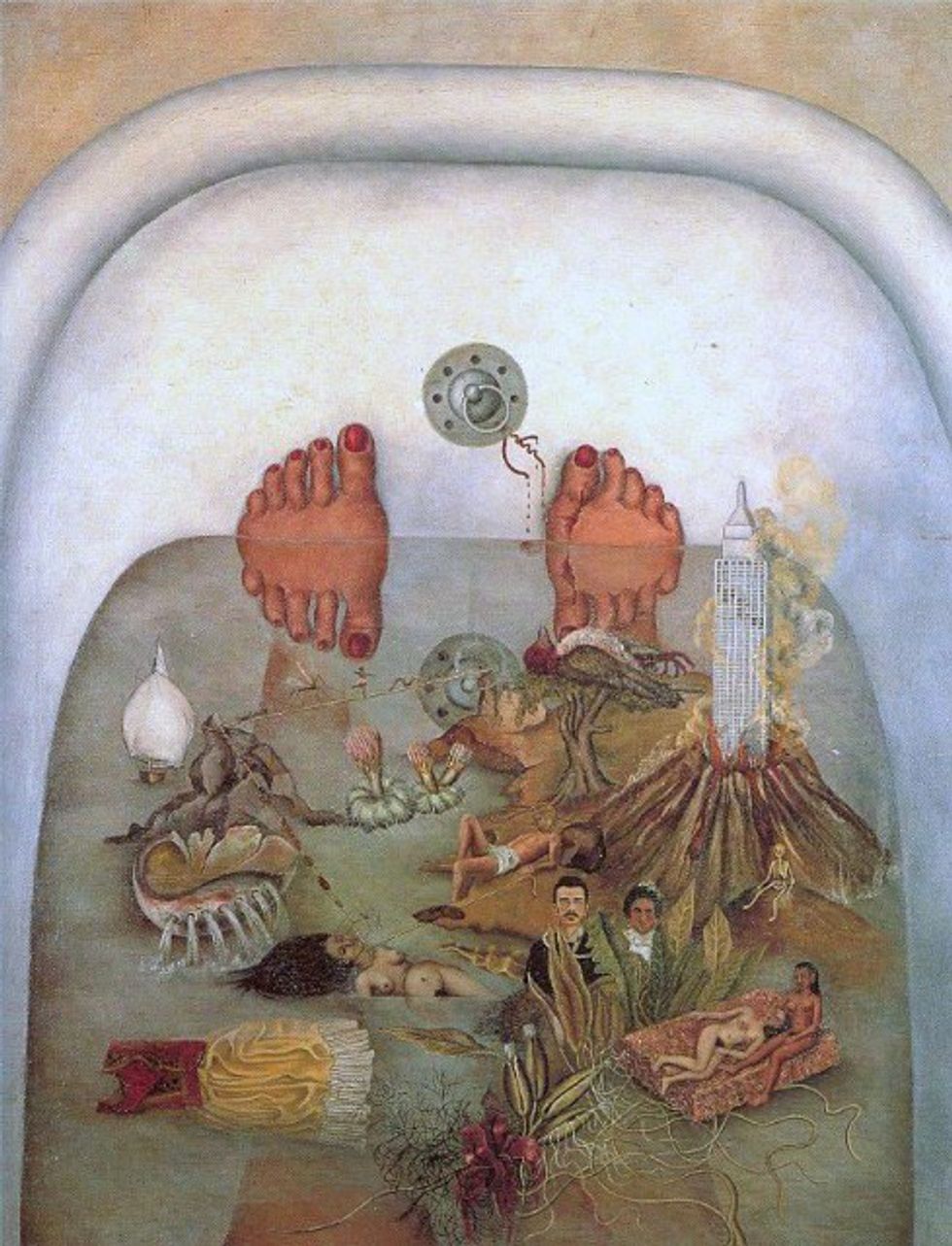During Frida Kahlo’s lifetime (and after), many viewers of her art have limited her capabilities and understanding of politics to the minimum by corralling her to the corners of her mind labeled “pain” and “suffering”. Janice Helland, however, brought to light these other thoughts and notions beyond pain and suffering in the form of politics and culture.
In her article “Culture, Politics, and Identity in the Paintings of Frida Kahlo,” Helland states that Kahlo purposefully inserted Aztec symbolism within her paintings to represent her longing for the renewal of pre-Columbian times, a time where Mexico had their own identity and was not controlled by other nations. Also, mentioned by Helland was the constant symbolism linking towards how much Kahlo disliked the United States and preferred her life in Mexico by ten fold. Helland’s article made the reader understand that Kahlo was a woman of great capability in not only her paintings of pain, but in the portrayal of love towards her nation and the sacrifices she was willing to make to have it back.
Pain and nationalism are not the only thoughts and feelings present either, but are the fuel to the fire that led to her political beliefs and turn towards communism. In Kahlo’s painting, What the Water Gave Me (1938), painful, personal, cultural, and political thoughts are present, yet are each interconnected in a way that one set back was the result of another and all thoughts are living together in the tub with her.
During the time when Kahlo painted the painting, her relationship with her husband, Diego Rivera was strained by the constant infidelities committed by each other, which is symbolized by the diamond shaped line connecting to the dead woman’s neck in which a man is on the other end of it, pulling. These strings of affairs and Diego’s stubbornness to leave the United States resulted in the man being imaged still on the island in which the Empire State Building is on while the woman is floating in the water, unable to go any further since she is being choked, when all she wants to do is return to her Tehuana dress, her culture. This suppression then leads to dislike towards the United States, which is imaged in the painting with the Empire State building being swallowed up by a volcano. The volcano symbolizes her culture, which in turn dominates the building and expresses her preference. If the volcano and the building try to mix, gangrene starts to spew out to show that both cultures will never be able to mix in her eyes, or at least, she will not be able to live in both areas and call them both home.
Frida Kahlo is more than just a painter who paints her physical and emotional pain, but is a painter who paints her pain, culture, political beliefs, and personal struggles. She puts her whole beliefs, life story, cultural love, and thoughts of the United States all in one bath tub. She is more than just a woman who has had a tragic life, but is a political thinker as well. The immense amount of symbolism in just one painting is anexample of her great mind as well as the complexity of some of the symbols and the background information on it, like the Tehuana dress and the Quetzalcoatl. Kahlo would not have stood for being corralled into a corner of pain and suffering expecting pity while she was alive, so why should we start corralling her there now?



















